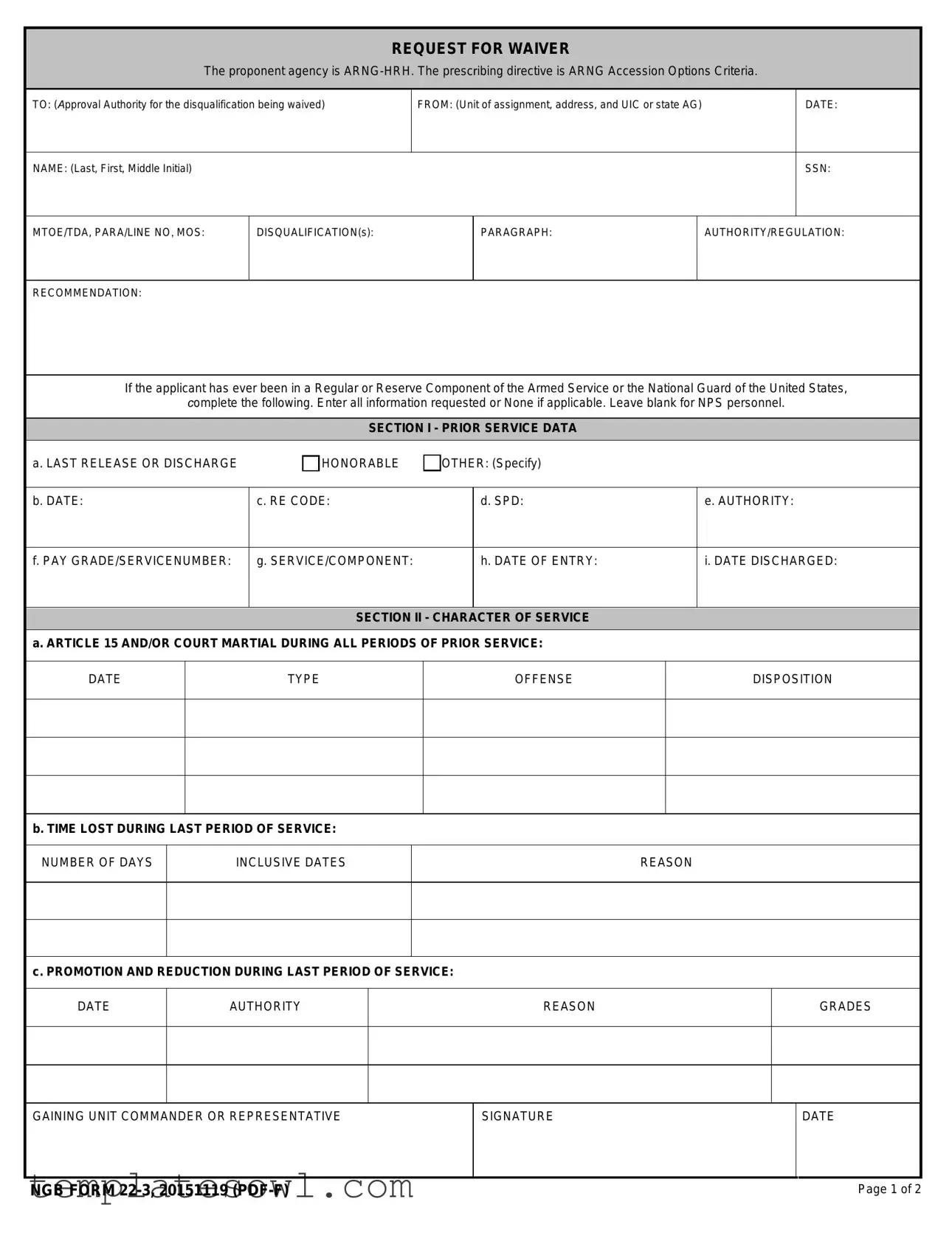What is the purpose of the NGB 22 3 form?
The NGB 22 3 form is a request for waiver related to disqualifications for individuals seeking to enlist or re-enter a unit in the Army National Guard. It allows a proponent agency, such as ARNG-HRH, to evaluate unique circumstances surrounding the applicant's disqualification. This form aims to provide a mechanism for those individuals who may have prior issues that could prevent their service but believe they deserve another chance based on their qualifications or character.
Who needs to complete the NGB 22 3 form?
Individuals who are currently disqualified from enlisting or re-entering may need to complete this form. If you have a history of military service, especially if you were previously a Regular or Reserve Component of the Armed Services, you should fill out this form. It's essential to provide all requested background information, including prior service details, character of service, and specifics about any disqualifications you may be facing.
What information do I need to provide on the form?
When completing the NGB 22 3 form, you will need to provide personal details, including your name, Social Security Number, and prior military service information. This includes your last discharge status, dates of service, any lost time, and promotions or reductions experienced. Be thorough in documenting character of service and specify any disciplinary actions. You must also list accompanying documents like a letter requesting the waiver or any medical evaluations.
What should I do if I don’t have certain information?
If you do not have specific information that the form requests, it is best to indicate this clearly. You can enter “None” where applicable, especially for questions about prior service information if you are a non-prior service (NPS) member. Make sure to provide any relevant supporting documents that you do have to strengthen your case for a waiver.
How will my request be evaluated?
Your request will be evaluated by the designated approval authority. They will review the full context of your application, including your past service and the reasons for disqualification. The authority will consider your prior performance, character, and potential contributions to the unit in making a determination. It is important to provide a comprehensive request that clearly outlines your situation and any mitigating factors that may support your waiver request.


